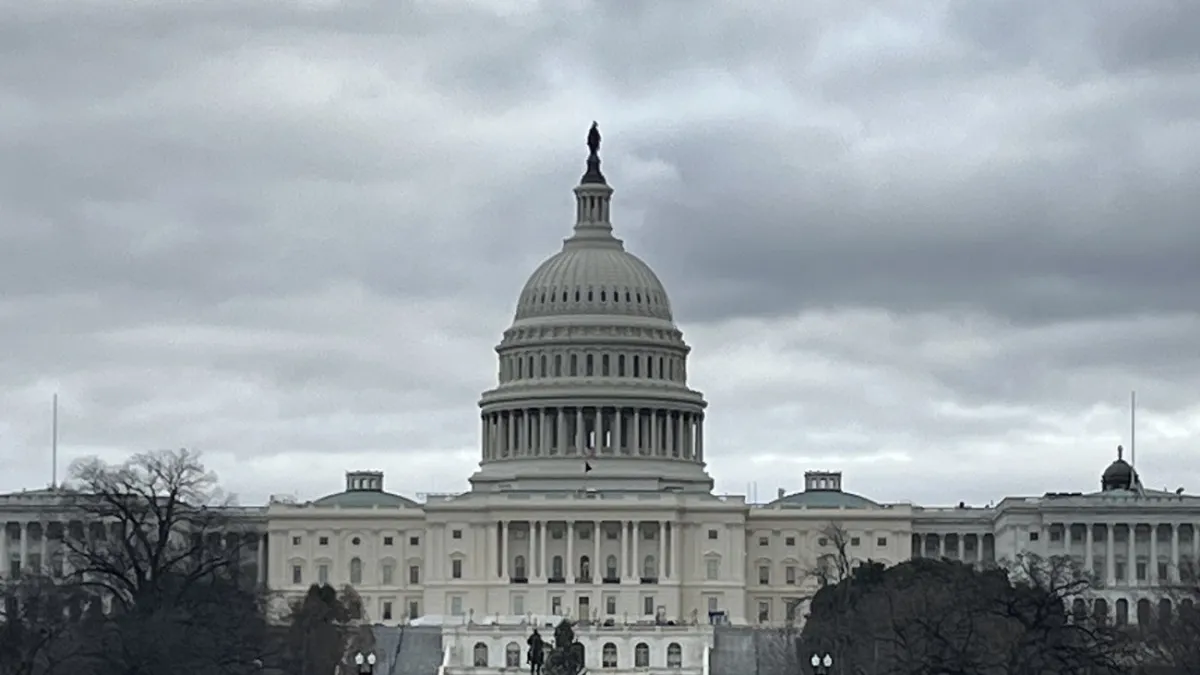
Senate Republicans on Wednesday unveiled a 70-page budget resolution that would pave the way for a massive package of tax cuts, border enforcement measures, defense funding and a $5 trillion increase in the federal borrowing limit.
The plan embraces an accounting approach that budget hawks have derided as a gimmick — and an expensive one at that, zeroing out the cost of some $4 trillion in renewed tax cuts.
Senate Budget Committee Chairman Lindsey Graham said he would use a “current-policy baseline” that treats an extension of the 2017 tax cuts as having no cost because it simply continues existing policy. “I have determined that current policy will be the budget baseline regarding taxation,” Graham said in a statement. “This will allow the tax cuts to be permanent — which will tremendously boost the economy.”
In all, the Senate framework would allow lawmakers to add up to $5.8 trillion to deficits over a decade, or $6.9 trillion including interest, according to the Committee for a Responsible Federal Budget, a nonpartisan group that advocates for deficit reduction. That total includes up to $1.5 trillion in additional room for new tax cuts sought by President Donald Trump, such as exempting tips from income taxes.
As in an earlier Senate plan, the new framework also calls for $150 billion in new defense spending and $175 billion for border security. That previous plan would have left tax changes for later, but Trump and House leaders preferred to roll up their agenda in what the president dubbed “one big, beautiful bill.”
The latest Senate blueprint adopts that single-bill approach, but it differs in significant ways from the plan approved by the House in February, and it could still face challenges as a result. For example, while it makes clear that Republicans still want to cut more than $2 trillion in spending over 10 years, it calls for just a small fraction of that sum — a minimum of $4 billion in cuts, compared to at least $1.5 trillion in the House framework. GOP senators say that lower threshold allows them the wiggle room needed to enact the plan under the process they want to use to avert the threat of a Democratic filibuster.
“The Senate Plan has my Complete and Total Support,” Trump said in a statement posted to his social media site. “Every Republican, House and Senate, must UNIFY. We need to pass it IMMEDIATELY!”
Democrats and budget watchers blasted the GOP plan as a fiscal disaster.
“No amount of gaslighting from Republicans about the true cost of their tax plan, now upward of $5 trillion, can hide the fact that they want to pay for handouts to billionaires and corporations by kicking millions of Americans off their health insurance, driving up child hunger and wiping out hundreds of thousands of jobs,” said Sen. Ron Wyden, the top Democrat on the Senate Finance Committee. “In terms of American lives ruined and lost, the human toll of what Republicans are trying to accomplish will be horrific.”
Maya MacGuineas, president of the Committee for a Responsible Federal Budget, said that the Senate plan trashes any semblance of fiscal responsibility by ignoring official congressional scorekeepers and potentially setting the stage for the largest deficit increase ever, allowing more than double the new borrowing as the House plan.
“This budget is a farce and it should be a non-starter,” she said in a scathing statement. “But more than that, it should be a loud alarm bell to fiscal hawks and future generations that their interests are not only being ignored, but fully undermined.”
What’s next: The Senate will work to pass the budget resolution sometime this weekend — only a simple majority will be needed — but lawmakers must first go through an extended “vote-a-rama” on amendments, including some politically fraught ones. If the framework is adopted in the Senate in the next few days, the House would be expected to take it up next week. If the House also adopts the resolution, most congressional committees will have until May 9 to come up with their parts of the reconciliation bill, with a goal of getting the legislation passed by Memorial Day.
That means that the heaviest lifting is still to come as Republican lawmakers must resolve fights that they have delayed until now — and decide specifically what programs to cut and by how much. “It’s a meaningful step, but it’s a baby step, folks. It’s just a blueprint,” Sen. John Kennedy of Louisiana told reporters of the budget resolution. “The real work starts after we do this.”
That work will likely have to assuage concerns of House conservatives who won’t be comfortable voting for a debt-limit increase and have been pushing for steep spending cuts to offset the cost of tax cuts. Some Republicans have also expressed worries about massive Medicaid cuts that may be included in the plan.